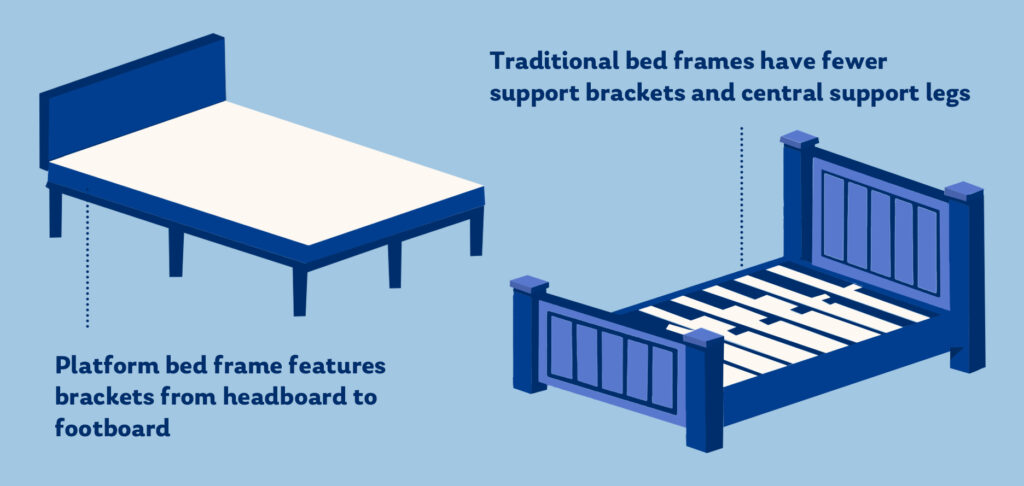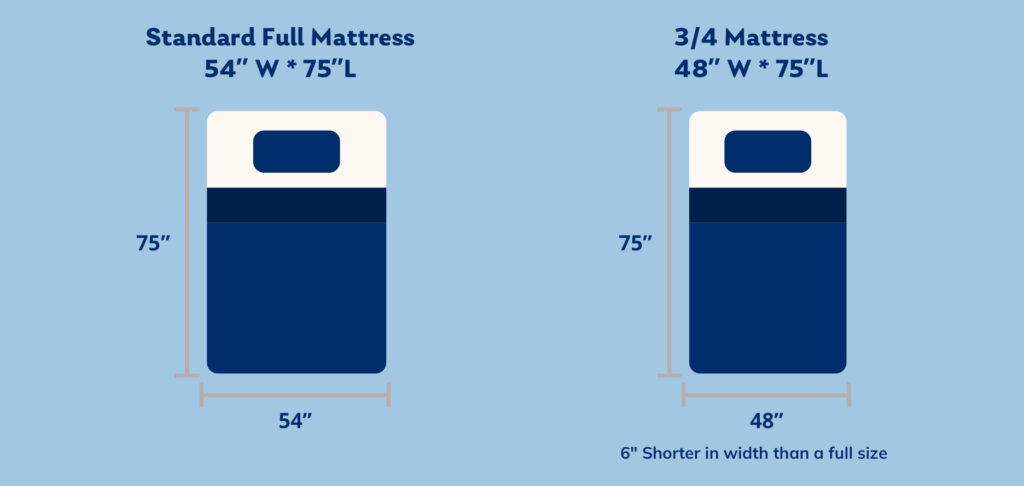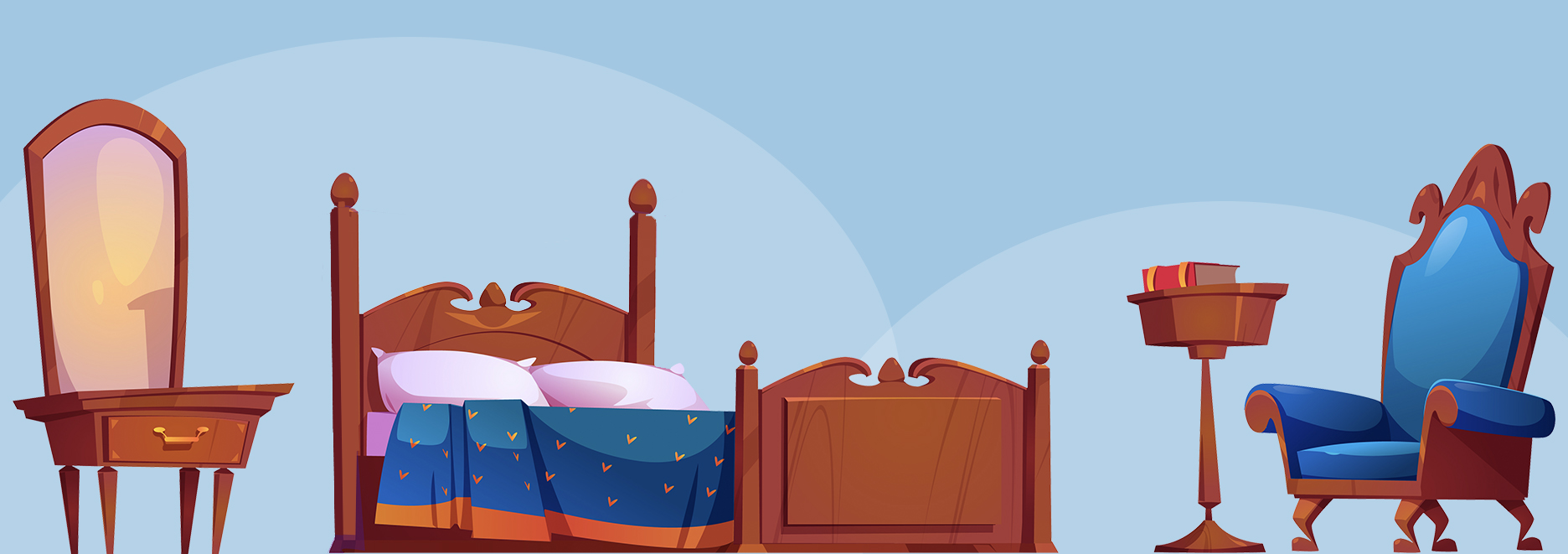Antique bed frames have an old-world charm that modern pieces often lack. But their uniqueness poses a challenge – finding a mattress to fit properly. Many antique bed frames were made before the modern standard-size run.
Thus, you can’t always head to the nearest mattress store as soon as you find an amazing vintage frame. The good news is we’ve got you covered. Keep reading to discover all you need to know about finding the perfect mattress for your antique frame.
Antique Mattress Sizes Were Not Standardized
The modern mattress size run of twin through king is a fairly new invention. This means bed frames made before about the 1950s might not be compatible with a standard-sized mattress.
Antique bed sizes were often all over the place. There were three-quarter mattresses, sleigh mattresses, grand mattresses, and more.
This variance means finding a mattress to fit an antique frame requires careful measurement and often a custom-made mattress. Even a small size mismatch could lead to poor support, discomfort, and potential damage to the mattress over time.
Properly Measuring Your Antique Bed Frame

Finding the right mattress for your antique bed requires carefully measuring your bed frame first. You’ll need to know the interior length, width, and height dimensions.
Length and Width
Grab a measuring tape and measure inside the perimeter rails of the bed frame. Measure from the middle of the foot of the bed to the middle of its head. Then, measure from one side’s center to the other’s center to get an accurate reading.
Your new mattress will need to match these interior dimensions as closely as possible. Even a few inches off could lead to poor mattress support and misalignment.
Depth
To determine the total height of the antique bed, including the mattress, you’ll want to measure the depth of the bed frame from the floor to the interior rails supporting the mattress.
There could be anywhere from two to six inches of space under the bed, and knowing the height of the support rails will give you a good idea of how high the bed’s profile will be when you add a bed base and mattress.
Do You Need a Bed Base?
Whether you need an additional mattress base depends on what type of antique bed frame you have.
Platform Bed Frame
Many antique bed frames – and virtually all metal antique frames – are platform beds. This means they have slats running from the headboard to the footboard.
If these slats are four inches or fewer apart, congratulations! You don’t need a bed base. You just have to find the right mattress.
Traditional Bed Frame
Traditional bed frames don’t have slats. Instead, they have between two and four support rails, and larger bed frames may also have center support legs. If you have a bed frame like this, you will need a box spring or foundation.
Knowing Your Bed Frame’s Weight Capacity
Knowing how much weight your vintage bed frame can take can be tricky because you may need help accessing that information the manufacturer. They may not even exist anymore!
Generally, cast iron or steel bed frames can hold more weight than wooden ones. Slatted platform beds also usually have higher weight capacity than traditional bed frames. You can also visually inspect the bed frame, and if it’s of sturdy construction (i.e. it does not bend, shake, or wiggle), it can likely hold more weight.
Common Antique Mattress Sizes

Occasionally, you might run across an antique mattress that fits the modern standard. More often than not, however, if you get an antique bed frame, you’ll be getting a non-standard mattress size, such as:
The Three-Quarter Mattress
The three-quarter size mattress (sometimes known as the short full) is slightly smaller than a full-size mattress at 48 by 75 inches. This is one of the most common mattress sizes compatible with antique bed frames, and it’s often easier to find than rarer sizes or custom mattresses.
Custom Antique Mattresses
Some mattress makers make alternative-size mattresses and variations of the three-quarter mattress to fit antique beds. However, you will likely need a custom-size one if you cannot find a mattress to fit your exact measurements.
Getting the sizing just right is crucial. Even one to two inches smaller or larger can lead to poor mattress support, misalignment, and long-term damage to both mattress and bed frame. So, your custom mattress and bed frame must be precisely compatible.
Converter Rails
Sometimes, you can convert your antique bed frame to a standard size by using converter rails. These rails fit onto the headboard and footboard of your antique frame to change it to a standard size. Just keep in mind that some antique frames – such as sleigh beds, heavier beds, or wooden beds – may not be compatible with converter rails.
Best Types of Mattress for Antique Bed Frames
Back in the day, innerspring mattresses were the primary sleep technology available, meaning most antique bed frames were designed to support these mattresses. Thus, your antique bed may be compatible with a more limited variety of modern mattress types.
Innerspring
An innerspring might be the perfect mattress for your antique bed frame, but there are better choices nowadays than these mattresses.
Innersprings are lightweight and rigid but often less contouring and pressure-relieving than other mattresses. This means an innerspring may not be the way to go.
Memory Foam
Memory foam mattresses are often a good compromise for antique beds because they are lighter-weight than latex or hybrid mattresses and highly contouring and supportive. So they’re comfortable for you!
Natural Latex
Natural latex is one of the heaviest mattress types. This means it may not be compatible with most antique beds because these beds were not designed to take the weight of such a heavy mattress. It’s best to avoid natural latex for all but the sturdiest antique beds.
Hybrid
Hybrid mattresses can make the perfect antique bed mattresses depending on their weight. Some hybrid mattresses are lighter than others, so stick to ones that don’t weigh as much to ensure you don’t strain your antique frame.
Conclusion
When it comes to antique beds, you should buy a mattress that fits the bed’s dimensions and weight capacity. However, you also want a mattress that can offer you the best possible night’s sleep.
That’s why you don’t just need to focus on your mattress’s size and weight but on its firmness and construction.



